Russo-Japanese War 1904-05
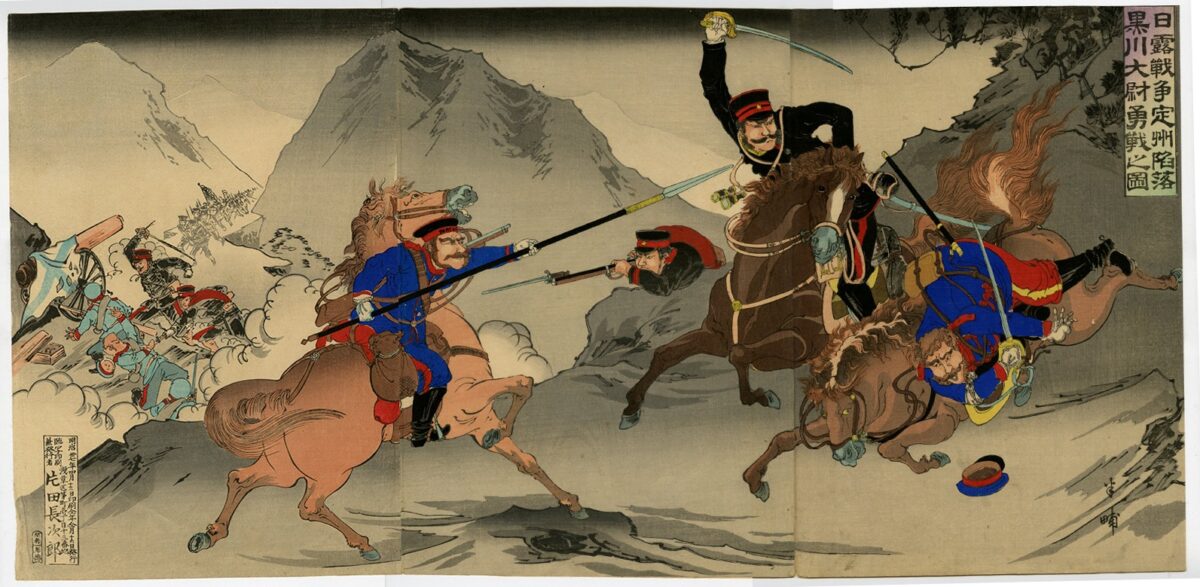
Janet Lane, Waler Data Base @ FaceBook. Image: Russo-Japanese war 1904-05, Library of Congress
We sold the biggest amount of horses in a short time for the Russo-Japanese war. Japan was our ally, we sold to them.
Over 1903 to 1905 (the war was 1904-5) they bought a minimum of 100,000 horses from us – I’ve researched the numbers – probably a lot more. In 1905 when a fleet of steamers took horses to the Russo-Japanese war, for the Japanese, the ship Everton Grange carried a world record for the times of 1,337 horses. She was a massive steamer of some 8,000 tons, at the time the largest ship to dock north of Sydney. She took her horses on at Bowen, Queensland and went via Hong Kong.
That we were able to supply this many war horses shows how robust our horse trade was. Ships were especially built for the horse trade, so taking hundreds at a time over on especially made ships was a routine matter.
Best of all they were fussy, their officers coming here and inspecting the horses, and paid well, unlike many others we traded with. They were our horse traders favorite customers. Never wasted time, very knowledgeable, very kind to horses.
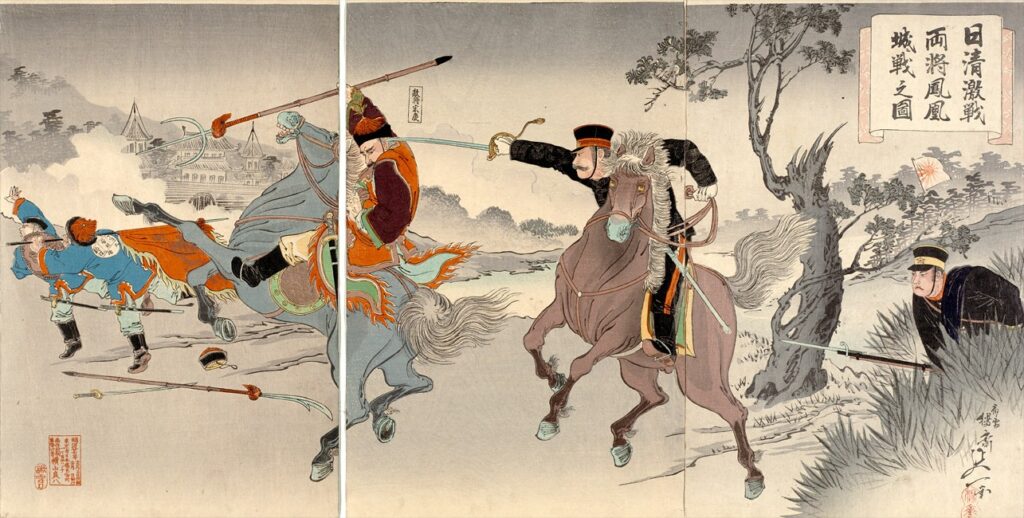
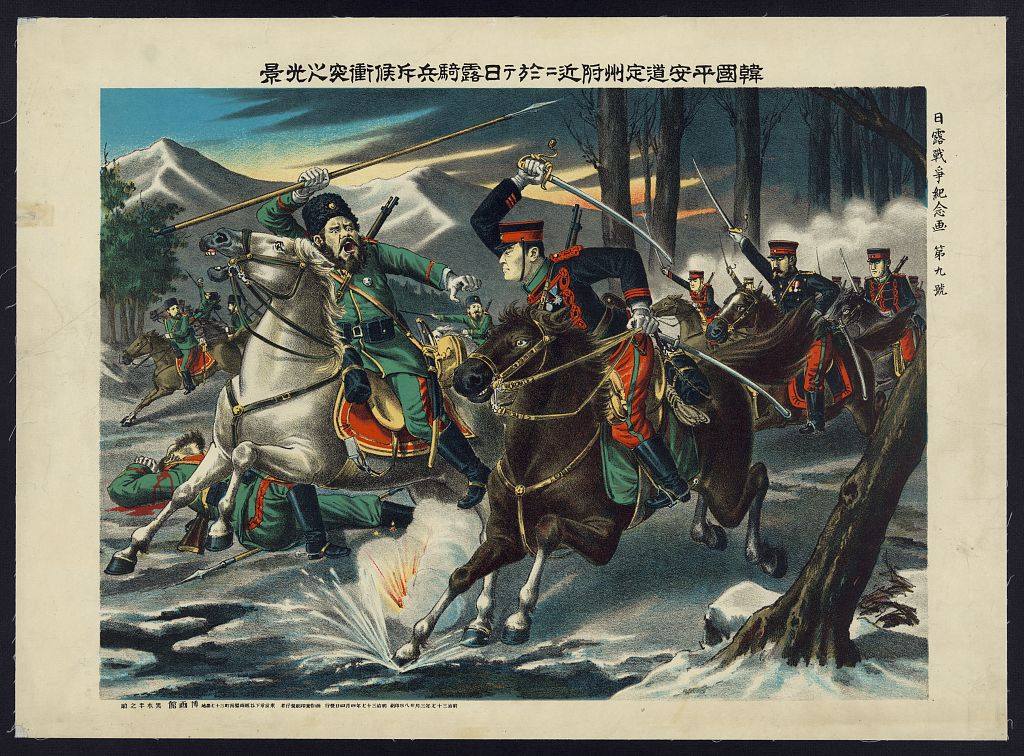
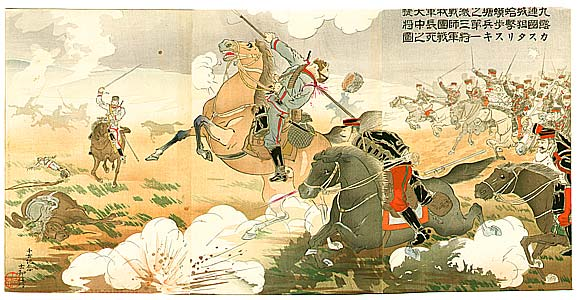
Images: Russo-Japanese war 1904-05; Library of Congress, Japanese and Russian cavalry troops clash near Chŏnju, North Pʻyŏngan Province, Korea; Scene of Battle at Jiuliancheng (Kyuren-jo in Japanese). Artist: Koson Ohara 1877-1945, from Artelino website.
The horse trade led to massive economic benefits for us – their country then buying wool, frozen meat, iron and more from us.
Our courageous skippers – trade ships not warships – delivered some shiploads of horses to Port Arthur, Manchuria, while sea and land battles raged. The Japanese had a brilliant Navy in this war too.
The Japanese had been buying our horses for years. They’d shopped the world for horses, and ours got the biggest tick of approval when they needed a lot. Argentina, Canada and the USA had a huge horse trade too.
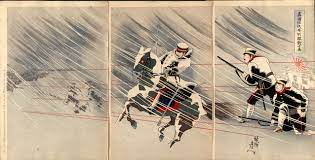
The Japanese looked after the horses superbly. The best of anyone we sold horses to.
There were prolonged periods of grim weather, heavy snow and blizzards. the Japanese built shelters for their horse which always came first.
They also had some jolly good Manchurian and Korean ponies in this war, however it was over big country and bigger horses were the go for cavalry and gunners.
The Japanese trained for horseback warfare to an incredible extent – horseback fighting skills are the martial art called Bajutsu. A centuries old tradition. In this war – one of the last with hand to hand cavalry fighting – their training also did them proud. In fact this war very probably had the most and biggest cavalry battles of any war ever; some extraordinary stories.
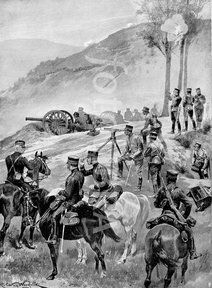
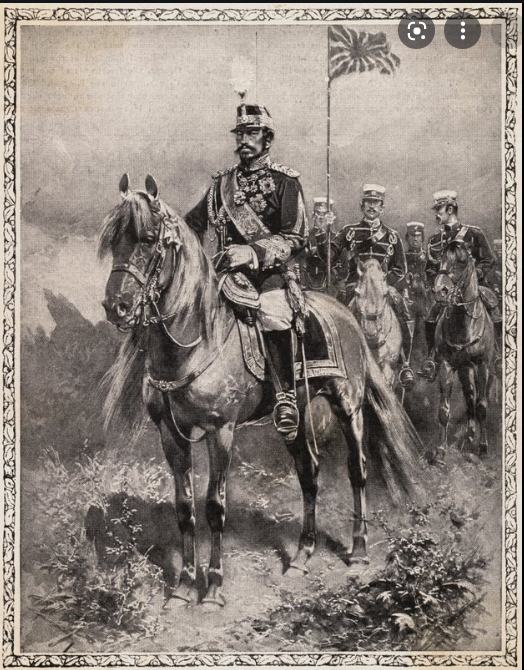
Images: Russo-Japanese war 1904-05; Emperor Meiji (he didn’t go to this war, but he did build an impressive cavalry and selected the best horses.) His Royal carriage was pulled by a pair of Walers.
Their army’s horse unit had superlative horsemen as officers. And in war the Japanese men looked after their horse before themselves. Their country was in good order, morale was high, and their army behaved very decently without atrocities; in fact with the greatest honour in this war.
Image below: Russian riders giving an exhibition of skilled riding.
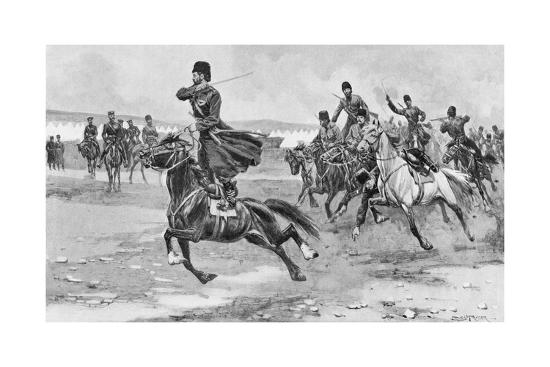
Russia at the time was a mess with dire poverty and much misery, the morale of the army was poor, as with the rest of the population. There were many desertions. Nonetheless, it is a credit to our horse breeders that our horses out-performed the Russian horses and many were Cossacks. The Russians far outnumbered the Japanese in this war.
The Russians captured some Australian horses during this war, some of their top officers rode them. That says a lot for our horses too. And for the Japanese, that Manchurian rebels sided with them against the Russians.
Image: General Nogi on his Waler
Some sources say this horse was captured by the Russians, then handed over at surrender by Stoessel, the Russian officer who rode it, but I can’t find proof of this and am certain Nogi had it before the surrender, (can’t remember details just basics).
Certainly Nogi did have Stoessel’s horses, one or two of which were Walers, and which he promised to keep safe. He did. The Russian had also fallen for his Australian horses; their bonding is strong and keeps men alive in war.
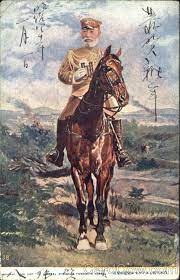
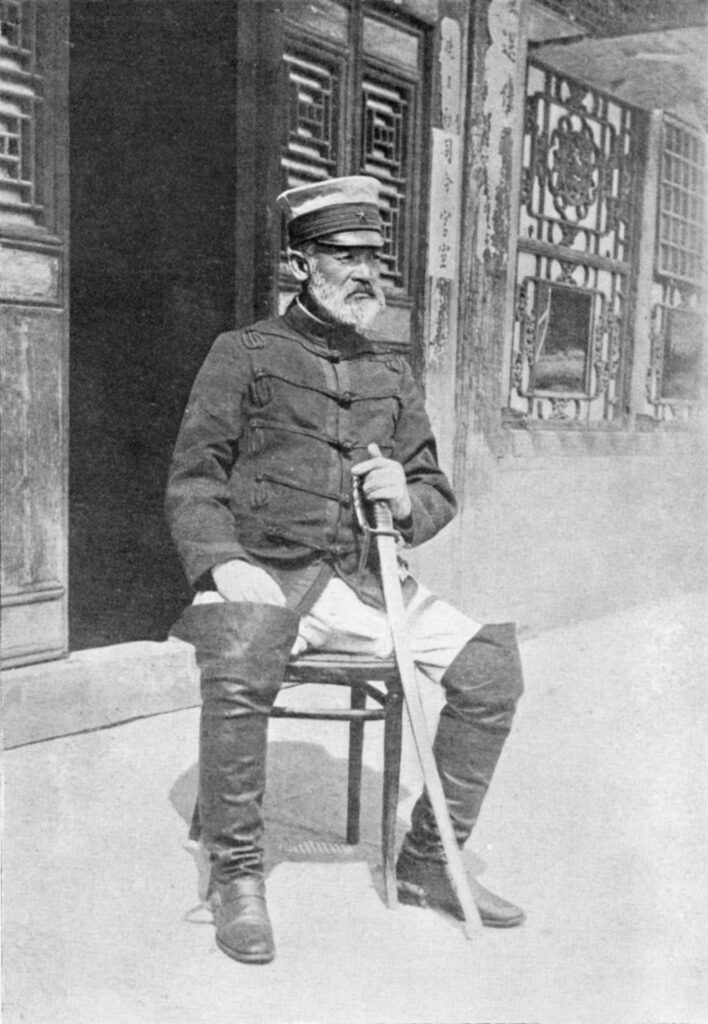
Image: General Nogi
A great horseman, in charge of a large cavalry in this war. An extraordinary man.
After the war he got monuments built to the dead, including the Russians, his enemy in that war.
He had the biggest monument built to the horses lost in the war.
One of my all-time heroes; for many reasons, mostly his code of honour, humanity and his humble outlook.
The war was fought over the possession of Manchuria and Korea. It was a time that modern weapons were making war a wholesale slaughterhouse.
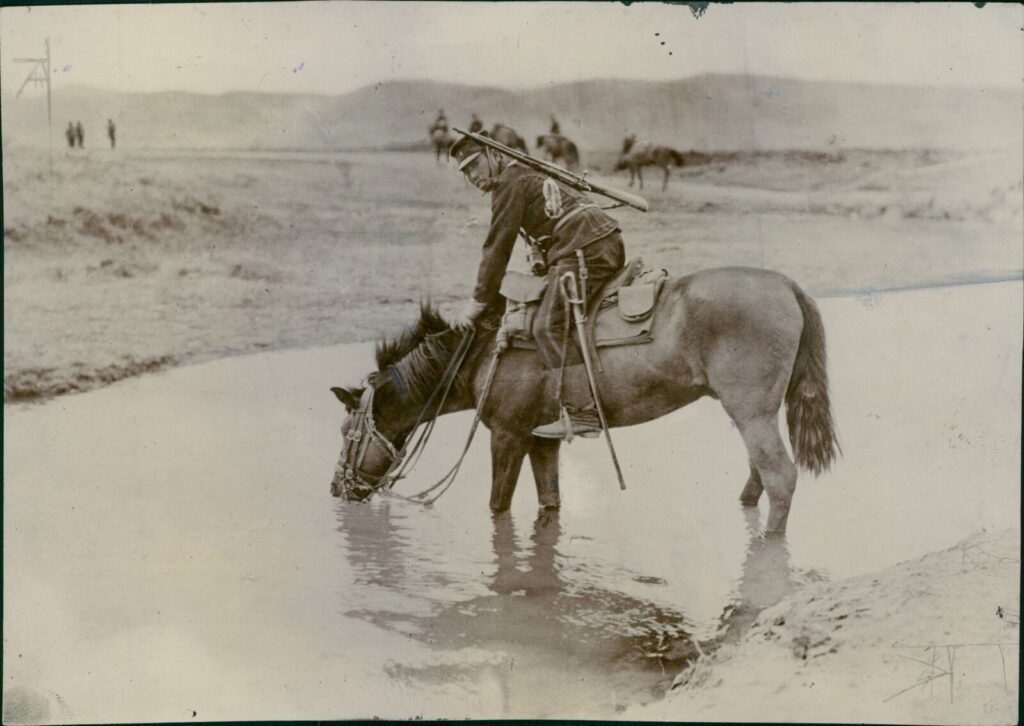
Image: Japanese Cavalry in Manchuria 1904: one of my own old photos (Janet Lane). May be a local pony. Didn’t get any details with it and it looks smaller than one of ours.; but who knows, nice strong little chap anyway.
Japan won the war. Massive losses on both sides.
This image shows the political commentary of the time, John Bull and Uncle Sam pushing Japan to fight Russia for them, thinking it would be the end of Japan as a fighting force, and lay Russia low for a long while.
As usual, mixed political messages as these plans are never direct policy. English and American nurses on hospital ships went, aiding the Japanese by treating their wounded. Thus Sammy and Bully had a leg in the Japanese camp. Just in case.
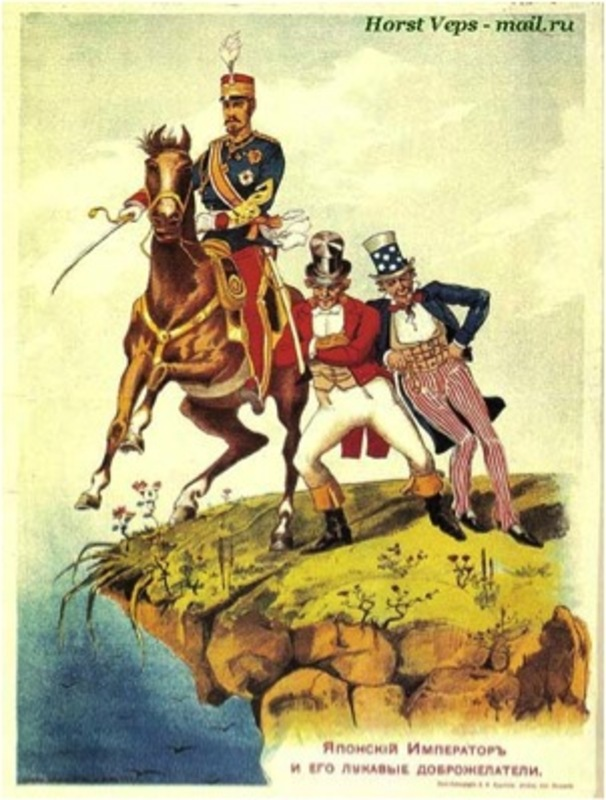
Some photos and art are included in this post, our horses did us proud, thanks to their doting Japanese owners – the ones in black uniforms, the Russians are in blue. Various sources for the photos and art (most not in the blog, various reasons mostly copyright). Google images and a scout about provided images posted here; hard to find despite many being taken at the time.
I have done a blog about our horse trade to Japan.